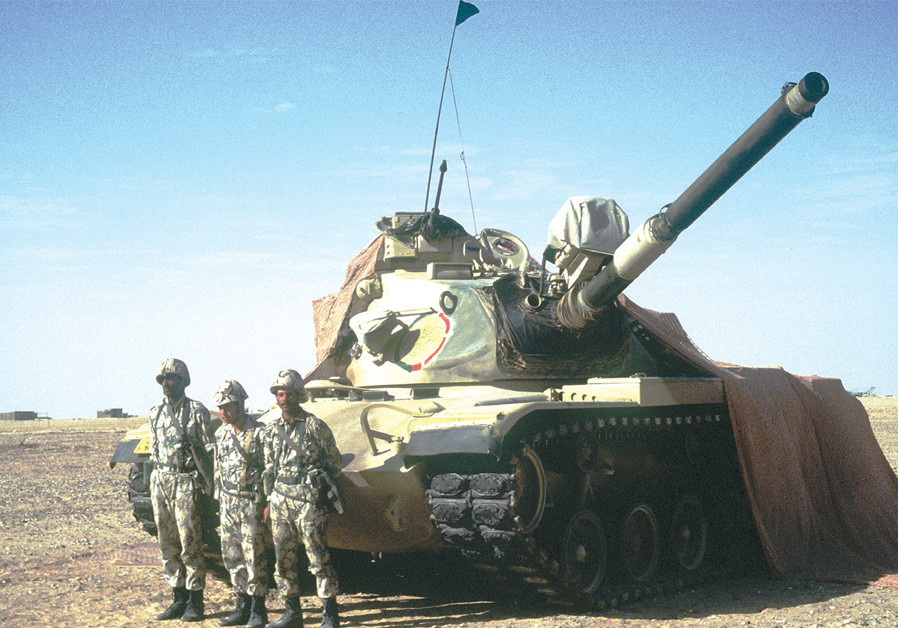BY SETH J. FRANTZMAN
 Even when they win, they lose. So miserable was the performance of Arab armed forces during the last century that even a few examples of victories tended to be defeats in one respect or another. When Egypt took Israel by surprise in 1973 and was able to cross the Suez Canal, it still achieved only limited success.
Even when they win, they lose. So miserable was the performance of Arab armed forces during the last century that even a few examples of victories tended to be defeats in one respect or another. When Egypt took Israel by surprise in 1973 and was able to cross the Suez Canal, it still achieved only limited success.In Armies of Sand: The Past, Present and Future of Arab Military Effectiveness, Kenneth Pollack charts the history of Arab armies and seeks to diagnose how they came to be what they are. A military analyst concentrating on the Persian Gulf at the CIA and National Security Council as well as a resident scholar at the American Enterprise Institute, his new book is comprehensive and a welcome contribution to our understand of the region and its war fighters.
Pollack starts with a series of questions. Why did the Iraqi Army collapse in the face of the ISIS assault in 2014? How did Libya manage to lose to Chad in 1987? While large conventional Arab armies have often been hobbled on the battlefield, in the last decades a plethora of extremist groups have proved to be threats to the Middle East and the world. This includes Hezbollah and ISIS. It might also include the Houthis in Yemen and other groups that have appeared capable of outwitting militaries that have more resources and power on paper.
Tackling such a large subject would appear exhausting and possibly impenetrable for a reader. Yet Armies of Sand is incredibly approachable, because the author is not only passionate on the subject but also straightforward about what he wants to explain.
“I cannot possibly present all of that history, country by country or war by war, in chronological order in this book and still have the space to discuss the sources of Arab military problems,” he noted. “I can’t possibly make a reader wade through all of that.”
He solves this by comparing the challenges facing Arab militaries with problems of other militaries. While he summarizes important conflicts, experts will find new details unveiled. Who even recalled that Israel struck Iraq’s Rutbah air base in 1967, destroying 31 Iraqi aircraft in the air and on the ground?
The problem for Arab militaries, Pollack argues, is not a simple story of failure or disorganization. Junior officers rarely exhibited initiative or flexibility, yet Arab armies tended to be good at logistics. Was this because they were impacted by Soviet military doctrine, which played a role in various states from Syria to Egypt? Pollack asserts that the Soviet model could have worked well, and that Arab armies, such as the Egyptians, performed well with Soviet equipment. The Egyptians, after a decade of American influence, did not do well in the 1991 Gulf War, advancing at a snail’s pace.
Maybe failures on the battlefield could be ascribed to politicization, the degree to which high-ranking officers all had to be connected to the regime. But Pollack argues that this is not the only answer to problems that affected armies like Iraq’s. He also focuses on the role of Arab culture, in formulating how officers in Middle Eastern armies make decisions.
“In Arab society, to do something wrong generally is much worse than to do nothing at all,” he noted. The dominant culture therefore created a disincentive for taking initiative or action.
Recommended videos
But there are also many examples of Arab armies and militant groups that have been effective.
Besides the case of large conventional armies, like Egypt’s in 1973, there is the case of Hezbollah. In a careful and interesting examination of Hezbollah’s wars with Israel from the 1980s to 2006, and then in Lebanon, the author makes the case that zeal and circumstances led Hezbollah to success. He also argues that as Shi’ite Muslims, the members of Hezbollah had some advantages over similar Sunni military institutions. He connects this partly to religious differences and to Iranian influence.
The most interesting sections of Armies of Sand are the numerous descriptions devoted to individual battles and conflicts. Because the author knew he could not tell every bit of the history, he concentrated on examples and comparisons to illuminate his points. A lengthy discussion of Soviet influence on wars in Africa, and comparing the performance of Arab armies to those of the Koreans and Vietnamese, is interesting. One almost learns more about these other examples than about some of the case studies of Hezbollah or ISIS.
For instance, only four pages are devoted to the ISIS offensives of 2014, which really should have been expanded. Those offensives were far larger than the 2006 war between Israel and Hezbollah, both in the ground covered and the human misery caused. There are also unanswered tactical questions about how ISIS vanquished Iraqi divisions in June 2014. The level of fascinating detail that Pollack provides on some battles, such as Israel’s 1967 offensives around Jenin, would have shed some much-needed light on those ISIS operations.
This is an exciting book that is timely and important, as the region goes through major changes. With the war on ISIS largely over and the Syrian conflict winding down, it is important to take a step back and look at how the Middle East got here. An examination of the militaries of the region, which have played an outsized role in almost every country in the Middle East, is a good place to start.
Pollack has written an interesting and readable account that is accessible for the average reader and interesting to experts who have studied these topics their whole lives.
